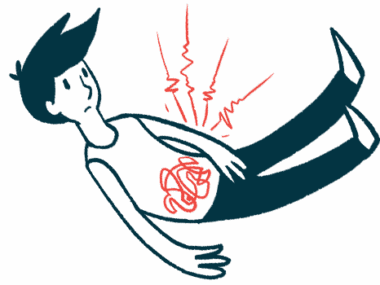How I ended the generational curse that is porphyria
A columnist shares her family's story of misdiagnosis and lack of treatment
Written by |

I’m a fifth-generation porphyria warrior, and the generational curse ended with me in February 2021. That month, I had what’s called a bilateral salpingectomy, the surgical removal of my fallopian tubes, to prevent me from getting pregnant. Although it wasn’t an easy decision, it had to be done.
In a previous column, I discussed how Nexplanon (etonogestrel implant) and other birth control methods were unsafe for me, so my options were limited. Although all of the other women in my family survived pregnancy and childbirth, I might not have been as blessed, because hormones were my kryptonite. For almost a year, every time I had my menstrual cycle, I’d end up in the hospital for days at a time.
My mom told me that when my Granny Grunt was 8 years old, her mother — my great-great-grandmother — passed away, possibly from a porphyria attack. My mom said the story was that my great-great-grandmother might’ve been poisoned by cabbage. A local doctor gave her a shot to alleviate the symptoms, but she passed away the next day. Granny Grunt told my mom that she believes her mother died from a porphyria attack.
Years later, Granny Grunt’s daughter Dorothy Ann became very sick as well. Her symptoms started when she was studying to become a missionary. My mom remembers that Dorothy Ann was paralyzed in a hospital bed in Granny Grunt’s room, and my mom would take her books to read. When my mom became sick with porphyria, the doctor that had treated Dorothy Ann refused to treat my mom because he felt guilty about Dorothy Ann’s death. He just wasn’t familiar with porphyria.
When my mom was 18, she became very sick as well. Doctors believed that she had an ovary infection and treated her with barbiturates, which only made the attack worse. Days later, another doctor saw my mom. Granny Grunt explained to him that my mom was having a porphyria attack. My mom can’t remember how she was tested, but the test came back positive for porphyria. The doctor called another doctor who was more familiar with porphyria.
My mom was hospitalized for three to four months, during which she became completely paralyzed and had to learn how to breathe and walk again. She was so skinny that when she was lying down, her spine showed as a knot in her stomach. This prompted doctors to insert a feeding tube. But because of the smell, my mom would vomit after each meal. In order for the feeding tube to be successful, they had to cut a hole in her chest and insert it there. Thankfully, she began getting the nutrients she needed and started gaining weight.
Although she was eventually released from the hospital, it took her a long time to gain her strength back. While she has been hospitalized with porphyria attacks three more times since then, she is still a blessed porphyria warrior.
Note: Porphyria News is strictly a news and information website about the disease. It does not provide medical advice, diagnosis, or treatment. This content is not intended to be a substitute for professional medical advice, diagnosis, or treatment. Always seek the advice of your physician or other qualified health provider with any questions you may have regarding a medical condition. Never disregard professional medical advice or delay in seeking it because of something you have read on this website. The opinions expressed in this column are not those of Porphyria News or its parent company, Bionews, and are intended to spark discussion about issues pertaining to porphyria.







Taylor Binkley
Which porphyria do you have? Or do you prefer not to say?
Kalyn Shelton
I have acute intermittent porphyria (AIP)